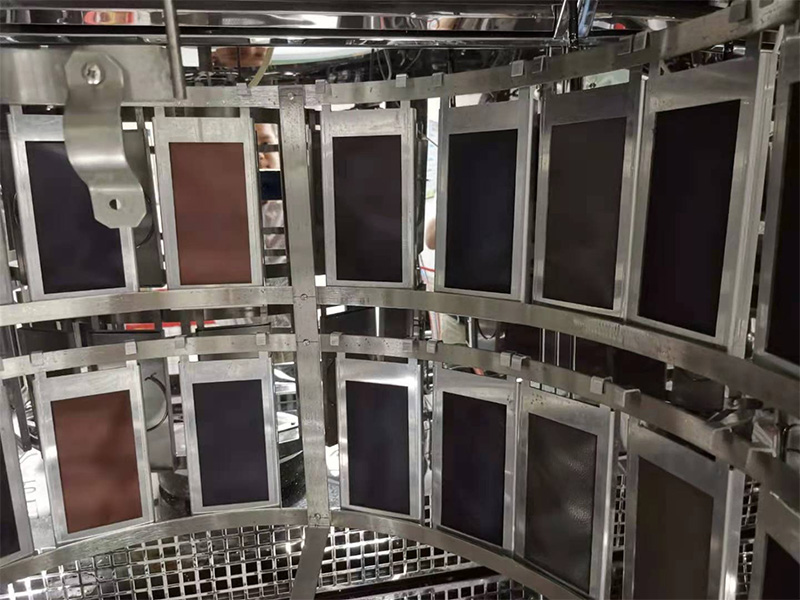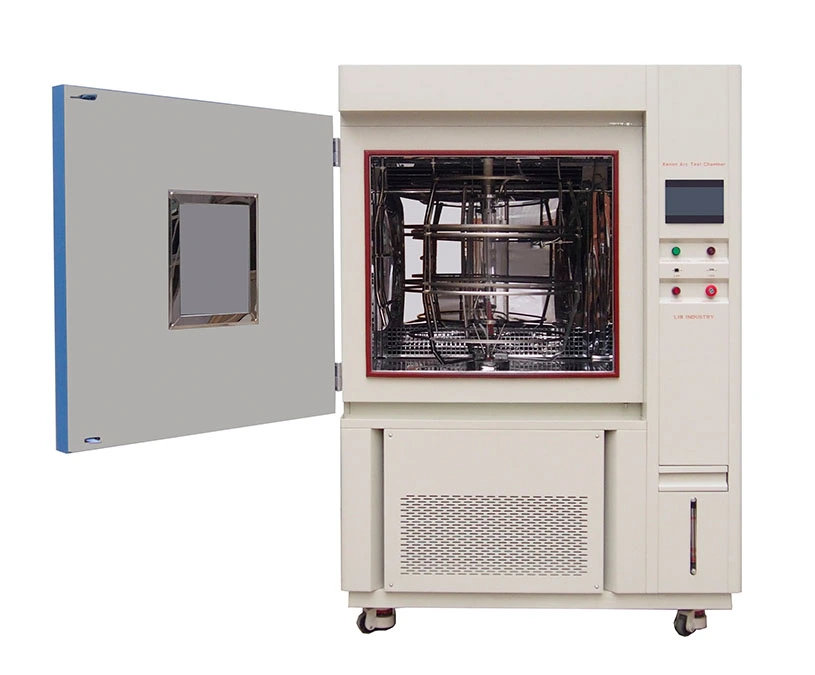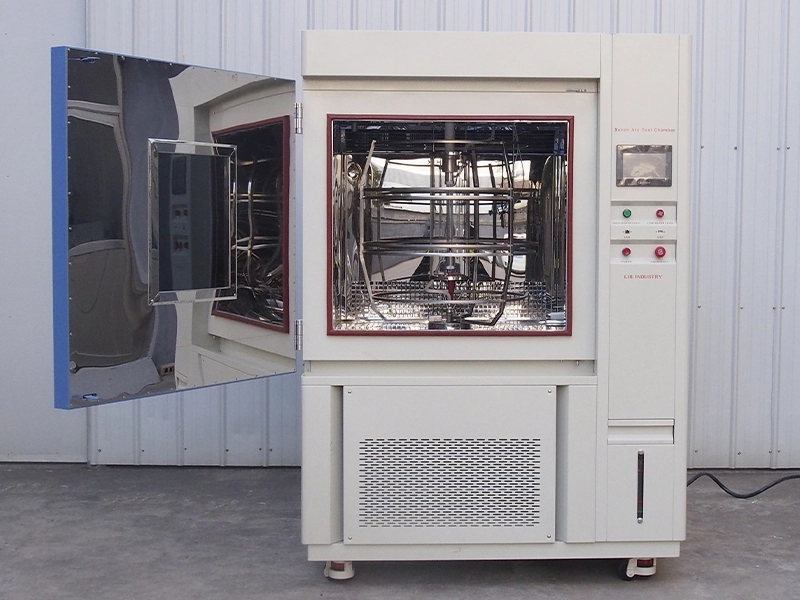

In the early 20th century, the world witnessed the emergence of a xenon arc aging test chamber. It comprised a carbon arc lamp as the light source, vertically positioned at the center of the apparatus, surrounded by a filtering system and a rotating sample rack. Test samples were installed facing the light source and rotated around the central lamp like a conveyor belt. Subsequently, xenon arc aging tests underwent continuous improvement. While the principle remained unchanged, both performance and form underwent fundamental changes. Nonetheless, regardless of the type of chamber, they all feature control systems for light intensity, temperature, and relative humidity. Xenon arc test chambers are widely used to assess the light stability and aging resistance of materials and products.

Xenon lamp weathering tests, a type of uv accelerated weathering tester, are vital means in the research and production process to screen and optimize product compositions. They are also crucial for product quality inspection. Materials such as coatings, plastics, aluminum-plastic panels, and automotive safety glass require weathering tests. Xenon lamp weathering test chambers simulate the main factors causing material aging, namely sunlight and humidity. These chambers use xenon lamps to simulate sunlight exposure effects and utilize condensing moisture to simulate rainwater and dew. Test materials are subjected to a cycle of alternating exposure to light and moisture at a certain temperature. In a matter of days or weeks, these chambers can reproduce the damage that would occur outdoors over several months or even years. Accelerated aging test data can aid in selecting new materials, improving existing ones, and evaluating how changes in formulations affect product durability.

Lib Industry Xenon arc aging test chambers utilize xenon arc lamps capable of simulating the full spectrum of sunlight to replicate destructive light waves present in various environments:
They provide environment simulation and accelerated testing for scientific research, product development, and quality control.
They are used for selecting new materials, improving existing ones, or evaluating changes in material composition and their impact on durability.
They effectively simulate changes in materials exposed to sunlight under different environmental conditions.
For small-scale or limited sample testing, desktop xenon lamps are recommended as they can achieve the same effects.
 English
English русский
русский français
français العربية
العربية Deutsch
Deutsch Español
Español


